By Saleah Blancaflor & Mark J. Burns
YouTube is the most preferred podcast platform among regular listeners, ahead of Spotify and Apple, according to Morning Consult data
- 46% of podcast listeners said they prefer consuming them with video, compared with 42% who said they would rather listen without video.
- 15% of podcast listeners said they would pay between $10 and $25 to attend a live recorded event, while 46% said they wouldn’t pay to see a live podcast recording.
Roger Bennett, one half of the popular soccer duo “Men in Blazers,” skipped onto Manhattan’s Terminal 5 stage in November as his co-host Michael Davies trailed behind, smartphone in hand, recording the reactions of nearly 1,000 live audience members.
“Men in Blazers” has come a long way since their first live show in 2013 sold out at New York’s Joe’s Pub. But even then, it was clear to Bennett that they had tapped into some aspect of the podcast medium that could propel them from niche media members to rock stars recognizable to soccer fans around the world.
“People saw us as the Grateful Dead,” Bennett said.
The Terminal 5 show, which aired live on Amazon.com Inc.’s Twitch, included conversations with comedian (and Liverpool fan) John Oliver and U.S. women’s national team player Kelley O’Hara. On-site sponsors included ESPN+, Hublot and Jägermeister, among others.
This is the new era of podcasting, in which the once audio-only format has evolved toward a hybrid model of distribution that often prioritizes video — specifically YouTube and live paid events. Video has allowed fans to know not only what their favorite podcasters sound like, but also what they look like and who they are on a much more personal level.
“I see the hybrid model becoming just as large, if not larger, in a short time period than audio-only formats,” said Scott Purdy, national media industry leader at KPMG US.
Podcasts in several genres, including sports, entertainment, comedy and pop culture, are increasingly utilizing visual media to market their brands, reach new audiences and generate additional revenue, said podcasters, production executives and media experts.
“If your goal is to find the largest audience possible and you’re not figuring out a way to put it on YouTube, you’re pretty shortsighted,” said Rachael King, founder and CEO of production company Pod People.
A recent Morning Consult survey suggests these initiatives are working: U.S. consumers now arguably see podcasts as more of a video-based medium than an audio one.
The business case for video podcasting
Morning Consult found that nearly a third (32%) of Americans said they prefer listening to podcasts with video, compared with 26% who prefer them with just audio, according to the late October survey.
Active podcast listeners (those who have listened to one in the last month) preferred video too, 46% to 42%. Among the top reasons consumers preferred a podcast with videos were to see facial expressions and reactions from the hosts and guests (51%) and because video helps them to better focus on the podcast (50%).

Some executives said incorporating video into the podcast medium produces a variety of opportunities: It enhances a program’s discoverability, helps to reach younger audiences, provides more engaging content, develops additional revenue streams and gives marketers new ways to advertise with podcasters, including product placement and tailored on-screen graphics.
Logan Swaim, head of content for Colin Cowherd’s podcast company The Volume, said prioritizing video is part of a “three-fold” initiative for the network, including “discoverability, marketing via social media and monetization.”
“We’re a young company in a saturated market, so our video strategy helps us get discovered,” Swaim said.
Nick Panella, chief strategy officer for Agua Media, which produces shows aimed at the U.S. Latino community, said video strategies have quickly become the norm in podcasting after it became clear they could drive audience growth.
“A few years ago, on the monetization side, there might have been a handful of top companies that had a video strategy in the space,” Panella said. “Now, virtually all of them have some sort of video strategy.”
Video elements are almost necessary for a modern social media strategy, according to King.
“It’s so important to have the assets for Instagram and TikTok, and even Twitter,” she said. “It performs better if there’s a visual element. You can do an audiogram with waveforms, but that doesn’t perform as well as when there’s human faces.”
Morning Consult data found that about one-third of Americans (34%) said seeing influential or celebrity guests is a “major reason” why they prefer watching a video with podcasts.
“It used to be very, very rare that I would see a clip of a podcast on TikTok and now it feels like 10% of the content that I see,” King said.






